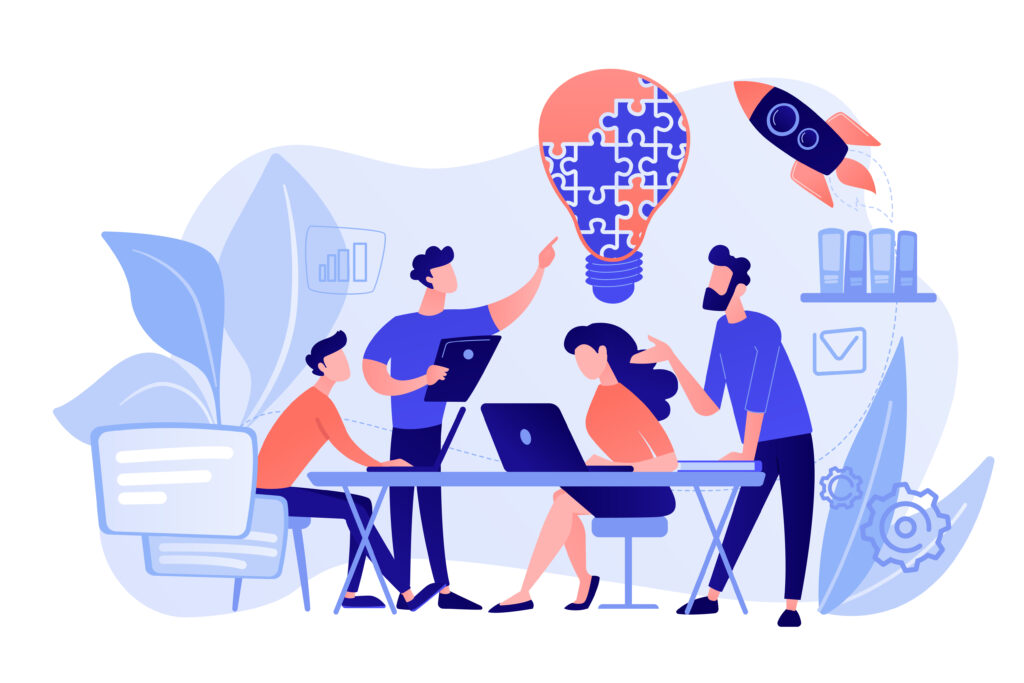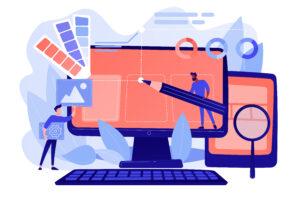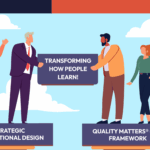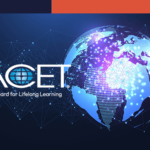Written by Kenia Alcy and Kristen Stevenson, ABD

How are Instructional Designers Architects for Learning? When you hear the words instructional designer, what is the first thing that comes to mind? Most often, people have a blank stare and have no idea what instructional designers are or what they do. Other times, people look at both words individually and make assumptions based on the literal meanings of each. Even instructional designers often struggle to explain what we do without simplifying or overcomplicating our roles for others. This blog will explore what an instructional designer is and how their roles are important for organizational success.
To provide a brief definition, instructional design is the art of educating using the psychology of learning theories and pedagogy (Reigeluth, 1983). In addition, instructional design aims to enhance the human learning experience using design principles combined with technological tools.
To enhance learning outcomes, instructional designers undertake various tasks. Outlined below are the primary responsibilities as identified by Kenny et al. (2005):
- Analyzing learners and learning requirements: Instructional designers analyze learners and learning requirements to tailor educational experiences. By understanding learners’ characteristics, preferences, and prior knowledge, designers create content that aligns with their needs. This analysis allows for identifying specific learning objectives, ensuring that the content addresses the desired outcomes. By considering the diverse ways individuals learn, designers can utilize varied instructional strategies, making the learning process more engaging and effective.
- Formulating clear learning objectives: The purpose of the learning objectives is to set guidelines for what learners are expected to achieve. They focus on essential skills, enable measurement of learning, and align with broader institutional goals.
- Creating instructional materials: Designing instructional content entails the creation of educational materials to support or facilitate the learning process. Instructional materials include lesson plans, presentations, modules, infographics, and other productions. These materials allow for the integration of diverse teaching methods, multimedia elements, and interactive components.
- Applying learning theories, strategies, and technology for achieving instructional goals: This refers to the systematic application of instructional design principles, effective teaching techniques, and technological tools to achieve learning objectives. This involves incorporating established learning theories, such as behaviorism, constructivism, or cognitivism, into the instructional design process. Other examples of well know theories in the field include models like ADDIE (Analysis, Design, Development, Implementation, Evaluation), SAM (Successive Approximation Model), Dick & Carey, and others.
- Assessing learning outcomes: Assessing learning outcomes involves evaluating the knowledge, skills, or abilities that learners have acquired after participating in an educational program or learning experience. This process typically includes various methods and tools to measure the effectiveness of instruction. It may involve collecting both qualitative and quantitative data, implementing assessments such as quizzes or tests, and utilizing various measures to determine if instructional objectives were successfully met.
- Evaluating the effectiveness of their instructional projects: For evaluation, instructional designers analyze various factors such as learning outcomes, learner engagement, feedback, and the alignment of instructional content with the objectives. The assessment aims to determine the overall quality and efficiency of the instructional design, allowing instructional designers to make informed decisions for improvement and refinement. It often involves using assessment tools, feedback mechanisms, and data analysis to measure the achievement of learning goals and enhance the overall educational experience.
An Architect for Learning
The essence of instructional design lies in its careful planning, organization, and comprehensive execution of projects, all while using specific instructional skills. Think of an instructional designer as an architect for learning. Just as architects create blueprints to lay the groundwork for physical structures, instructional designers do the same for compelling learning experiences from the classroom to the boardroom (Reigeluth, 1983).

Instructional design isn’t just about teaching knowledge; it’s about empowering learners to acquire that knowledge using advanced design skills effectively. This involves leveraging various learning strategies to enhance learners’ capabilities. Furthermore, professionals in this field are constantly at the forefront of advancements in the field, connecting emerging technologies and new ideas to convey learning with excitement and engagement. They incorporate interactive elements like simulations or scenarios, gamification, interactive content, and multimedia such as videos and animations. They also try personalizing the learning experience using tailored instructional methods based on their learners’ needs. By combining these strategies, instructional designers create a dynamic and inclusive learning experience that caters to different learning styles and preferences.
They are skillful at transforming learning into an immersive and enjoyable journey, drawing upon their expertise, creativity, and resources. Instructional designers are visionary craftsmen who sculpt dynamic learning environments, shaping the future of education with every project they undertake.
Instructional design is a driving factor behind the success of many organizations. With their background expertise in learning theories and skills surrounding the creation of learning experiences, they design an impactful learning experience (Nworie, 2022). Instructional designers, like architects, though they work in different fields, share the ability to plan and execute their projects strategically. Both instructional designers and architects follow a design process, user-centered approaches, creative problem-solving, collaboration, and integration of technology. Instructional designers contribute to organizational success by creating effective training programs that enhance employee performance and engagement. They enhance learning, maintain consistent training standards, provide cost-effective solutions, and improve established processes. Additionally, their role supports talent development and retention, which typically aligns with organizational objectives and fosters a learning culture. As a result, they ultimately contribute to an organization’s overall success and competitiveness.
In Summary – Instructional Designers are Architects for Learning

The role of instructional designers emerges as an essential component of organizational success. As we navigate the complexities of this profession, it becomes evident that the initial ambiguity surrounding the term affects how people perceive and understand the field. Often faced with the challenge of conveying their responsibilities, instructional designers play a crucial role in shaping learning experiences. Their ability to bridge the gap between content and effective delivery is a foundation for organizational growth. By appreciating the intricacies of instructional design, we make way for enhanced learning environments and contribute to the overall success of organizations. Contact eLearningDOC to help how we can help you with instructional design.
About the Authors
While also serving as a full-time staff member, Kenia Alcy is completing her master’s degree in Instructional Systems and Learning Technologies (Summer 2024) at Florida State University. Her passion lies in merging her educational background with creativity, and is aspiring to become an instructional designer with a focus on the beauty and cosmetics industry. Outside of her current role and academia, you can find Kenia breaking a sweat at the gym, doing makeup for her clients, or experimenting in the kitchen with new recipes in her free time.
Kristen Stevenson, ABD, is the Executive Director of Curriculum Development at eLearningDOC. With over 25 years of experience in higher education, Kristen seeks to find the intersection between meaningful curriculum and effective instructional design for each of the eLearningDOC’s clients. Kristen holds a Bachelor’s degree in Design (architecture) from Clemson University and a Master’s degree in Counseling from Webster University. She will complete her doctoral coursework in Instructional Design and Technology from Keiser University in April 2024. Her research interests include implementing social-emotional learning in the college classroom, student persistence, mindfulness in education, and inclusivity and accessibility in learning.








